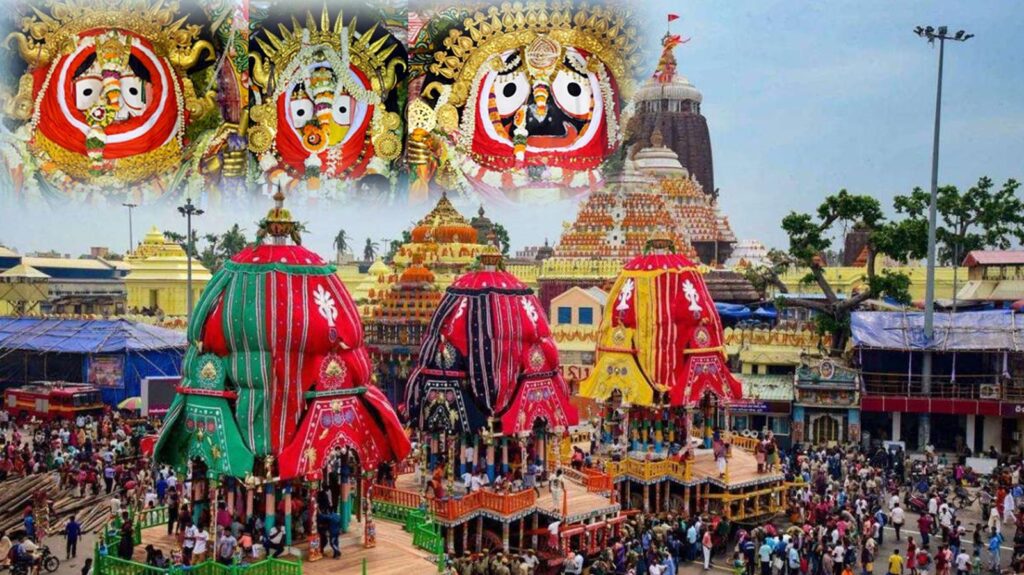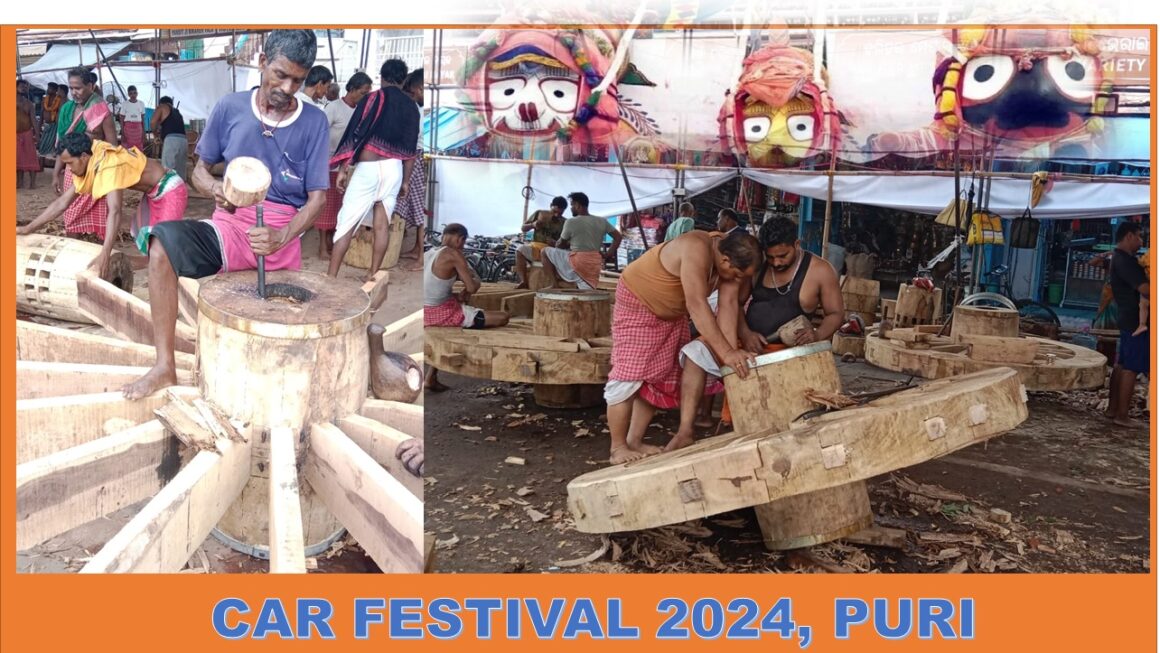The Skanda Purana (Vaishnav Khanda), the largest of all Puranas, narrates the greatness of the Purusottam Kshetra. It contains eighty-eight thousand and one hundred slokas (stanzas). Once, while Sage Jaimini was describing the greatness of Purusottam Kshetra to the assembled sages, all of them curiously asked him, “Where is Purusottam Kshetra?” Jaimini replied that Purusottam Kshetra is situated on the eastern coast of Bharatvarsha and to the south of the river Mahanadi, which is in Utkal. There is a Nilagiri mountain on the sea coast known as Tirtha Raja Mahodadhi.

Odra desha Iti Khyate Barshe Bharatsamgyake Dakhinasyodadhestire khetram Sripueusottamam.
Holy place Jagannath Dham Puri
All of this land’s people are devotees of Lord Vishnu. This holy place never experiences natural calamities of any kind. The majestic wooden idol of Vishnu, also known as Lord Jagannath, graces this Purusottam Kshetra. In ancient times, Lord Vishnu, incarnated as Varah, liberated Prithivi (Bhu Devi) from the depths of Rasatala from the clutches of a mighty demon, Hiranyaksha, and Prithivi then gained normalcy.
Lord Brahma then resumed the task of creation with forests, mountains, and holy places, wherever necessary, in a beautiful manner. The task of creation affected me, prompting me to contemplate how humans could liberate themselves from the three primary forms of sorrow: adibhoutika, adhidaivika, and adhyatmika. Lord Brahma prayed to Lord Vishnu for guidance, and the letter directed him to go to Purusottam Kshetra for a solution. This kshetra is the holiest of all places in the world. In this kshetra, those who have fully devoted themselves to me give birth. The deluge does not touch this place. I dwell at this holiest place, leaving all my kiths and kin as Lord Purusottam.
Also Read
The History Of Shree Jagannath’s Establishment At Shree Kshetra Puri In Odisha.
Divinity of the Purusottam Kshetra
In that kshetra, there is one banyan tree known as Kalpa Bata, and near that tree is a holi pond called Rohini Kunda. Anybody who gets a chance to take a holy dip in Rohini Kunda or get in contact with the water of that pond gets absolved of all of his sins. O Brahma! You pay a visit to that place so that you can learn about its virtues. Lord Barhma went to Purusottam Kshetra as per the instruction of Lord Vishnu.
On reaching Purusottam Upon reaching Purusottam Kshetra, Lord Brahma was able to see Lord Vishnu in the same form that he had seen during his times of prayer and meditation. Brahma saw a thirsty crow come, and after taking a bath in Rohini Kunda and seeing the celestial body of Lord Vishnu, his crow image was changed to that of Vishnu. Lord Brahma was astonished and thought that, like a crow, all would be freed from the vicious cycles of birth and death.
Goddes Laxmi in Purusottam Kshetra
Suryanandan Lord Dharmraj (Yamaraj) also equally thought that his power of causing death had no effect on people living in Purusottam Kshetra( Shreekshetra). Yamaraj was worried about this, so he rushed to Purusottam Kshetra and prayed for Lord Vishnu’s intervention in this matter. Lord Vishnu, satisfied with Lord Yamaraj’s prayer, glanced at Goddess Laxmi to advise him. Goddess Laxmi responded, “Your aim and desire will not be fulfilled here, because this “Shree Kshetra” is our dwelling place, and we will remain here always.
” Furthermore, anyone entering this place, be it a man, animal, bird, or insect, will experience a complete absolution of their sins, akin to the burning of cotton. Those who reside here are not under your control.“ Yamaraj then wanted to know the Purusottam Kshetra’s area. According to Goddess Laxmi, Purusottam Kshetra resembles a conch-shaped volute towards the right-hand side, and its area is ten square miles, of which about six square miles are inside the sea, which is known as Tirtha Raj. Lord Shiva graces the rest of the kshetra.
Side giving goddess
They are Yameswar, Kapalmochan, Markandey, Isaneswar, Nilakantha, Khetrapala, Bilweswar, and Bateswar. Worshipping the above eight directions liberates man from his gravest sins. The names of these eight goddesses are Mangala, Alamba, Kalaratri, Marichika, Ardhasini, Chandarupa, Sarbamangala, and Khetreswari Vimala. As the centre of this conch-shaped Kshetra, Lord Vishnu manifests Himself in the form of a wooden structure as Lord Jagannath, Lord Balabhadra, Mother Subhadra, and Chakraraj Sudarshan to bless all in the world.
